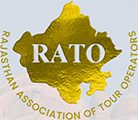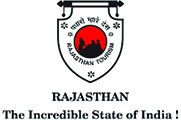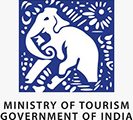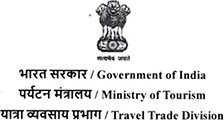Need Help ?? Contact us..!!
- info@rajasthantourismbureau.com
- +91-9928026027/ +91-141-6783026
Golden Triangle Tour with Varanasi
One of the best tour packages of North India is a tour to cities for falling in the golden triangle of North India. The golden triangle tour with Varanasi provides you a chance to discover the fabulous cities of North India (Delhi, Jaipur, and Agra) along with the oldest and holy city of Varanasi.
Amid your tour, you can get experience something various in each city. Delhi has the collection of everything like Old and New, The Pink City will provide you to knowledge about Rajputana Royalty, Agra will show you the knowledge about Mughal times and Varanasi will illuminate your religious soul.
The golden triangle tour is a relaxed but saintly experience that attracts huge people with various beautiful attractions. This city is also an important education center and having one of the biggest residential universities in India.
Day 1 : Arrival in Delhi
On arrival, you will be welcomed by our representative at the airport, after which is the transfer to the hotel.
Day 2 : Delhi Sightseeing Delhi – Jaipur – Agra – Varanasi – Delhi
Sightseeing of Old and New Delhi in the afternoon. The sightseeing of Old Delhi begins with a visit to Jamma Masjid, the largest mosque in India. It was built in the year 1650.
This is followed by a drive-past the Red Fort, built during the years 1639-1648, by the Moghol Emperor Shah Jahan, the creator of the famous Taj Mahal.
We later proceed to Raj Ghat, the memorial site dedicated to Mahatma Gandhi, who was cremated here following his assassination in January 1948.
After visiting Old Delhi, we proceed for a sightseeing trip of New Delhi which begins with a drive-past the Safdarjang’s Tomb, built in 1753-54, by the Nawab of Avadh for his father, Safdarajang. It is one the last exemples of Mughal architecture before the final remnants of the great empire collapsed.
We then reach the famous Qutub Minar (construction started in 1193 & completed in 1368). This striking medieval, soaring tower of victory is nearly 73 metres high and has five distinct storeys. Within the Qutub Minar Complex, and amidst the ruins of Quwwat-ul-Islam Mosque, stands the famous Iron Pillar, which has stood the vagaries of centuries and has not rusted at all for nearly 1600 years!!
We then proceed to Humayun’s Tomb (World Heritage Monument), built in the mid-16th century by his Persian-born senior wife, Haji Begum.
We later drive through the Diplomatic Enclave, which houses the Embassies of most of the foreign countries.
We shall make a short stop for a quick photo shoot at the India Gate and the Rashtrapati Bhavan, the official residence of the President of India, which was formerly the domicile of the last Viceroy of India. Finally we shall visit Connaught Place, the main and upmarket shopping area of New Delhi.
Day 3 : Delhi – Jaipur
(Distance 320 kms. / Travel time approximately 5 hours)
After breakfast, we shall proceed from Delhi to Jaipur. Upon arrival, we check-in at the hotel or After lunch, we proceed for a tour of the city’s iconic structures. First comes the Jantar Mantar, a magnificent stone observatory, built by Raja Jai Singh in 1728 known for his passion for astronomy. The Jaipur observatory is the largest and best preserved of the five he built, the other four being in Delhi, Varanasi, Ujjain and Mathura.
Later in the evening, we have a unique experience lined up for you, whereby you can discover, at first hand, the culinary delights of some typical Rajasthani cuisine and you could even try your hand at making some ‘chapatis’ and preparing a regional vegetable curry. You also have the option of a photo session with an entire family attired in the traditional Rajasthani style.
Day 4 : Jaipur Sightseeing
After breakfast, we proceed on an excursion to Amber Fort which is located about 12 kms. from Jaipur. It was the ancient capital of the Kachhwaha Rajput rulers. This unique wonder is a must on every tourist itinerary of Rajasthan. Construction of the fort-palace was begun in 1592 by Maharaja Man Singh, the Rajput commander of Akbar’s army. It was later extended by the Jai Singhs, before they moved their capital to Jaipur.
The fort is a superb example of Rajput architecture, stunningly situated on a hillside and overlooking a lake. You will really cherish the ascent to the Palace on the back of brightly caparisoned elephant. We shall visit the multiple chambers and the hallways of this Palace which are famous for their designs and decorations.
We then visit the opulent City Palace, the former Royal residence, built in a blend of Rajasthani and Mughal style. The Palace contains fabulous museums displaying an excellent collection of miniature paintings, traditional costumes and armory.
Later, we drive past the intriguing Hawa Mahal (Palace of the Winds), which is one of Jaipur’s major landmarks. Constructed in 1799, this five-storey building is a stunning example of Rajput artistry. It was originally built to enable ladies of the royal household to watch the everyday life and processions of the city.
Day 5 : Jaipur to Agra via Abhaneri & Fatehpur Sikri
(Distance 250 kms. / Travel time approximately 5 hours)
After breakfast at the hotel, we drive down to Agra, but en route we stop over at Abhaneri, situated about 95 kms. from Jaipur. This little village has one of Rajasthan’s most awesome ‘baoris’ (= stepwells). It is around 30 metres deep and among the largest stepwells in India. It not only stores water but is also very effective for groundwater harvesting. This stepwell, famous for its distinctive construction and a truly unique design, is one-of-a-kind and considered as the most picturesque in the world, which therefore naturally attracts a lot of attention from the visitors.
Fatehpur Sikri: This magnificent fortified ghost city was the capital of the Mughal Empire between 1571 and 1585, during the reign of Emperor Akbar. Although brilliant from an architectural point of view, Akbar’s city was erected in an area that was plagued by water shortages and it was abandoned shortly after Akbar’s death because of this.
Fatehpur Sikri’s beautiful and magnificent Jama Masjid (now brilliantly restored) is said to be a copy of the mosque at Mecca. The main entrance is through the impressive 54 metre-high Buland Darwaza (Victory Gate), considered as the tallest gateway in the world. It was constructed to commemorate Akbar’s victory in Gujarat.
In the northern part of the courtyard is the superb white marble ‘dargah’ or tomb of the sufi saint Shaikh Salim Chisti, who Akbar credited with bringing him a heir. The carved marble lattice screens (‘jalis’) are probably the finest examples of such work you will see anywhere in the country.
This amazing courtyard has many other wonders, such as the Palace of Jodh Bai, Birbal Bhavan, Panch Mahal and of course, Diwan-i-Khas (The Hall of Private Audiences) and ‘Diwan-i-Am’ (The Hall of Public Audiences). All these structures reflect the glory and the grandeur of the Mughal Empire.
Day 6 : Agra Sightseeing & Overnight Train for Varanasi
After breakfast, we proceed for a city tour to discover the Taj Mahal (Closed on Fridays). Described as the most extravagant monument ever built for love, this poignant Mughal mausoleum has become the ‘de facto’ tourist emblem of India.
The Taj Mahal was built by Emperor Shah Jahan as a mausoleum for his second wife, Mumtaj Mahal, who died in childbirth in 1631. Construction of this edifice built with pure white marble began in the same year and it took 22 years to finish the same. In total, a total of 20,000 people and craftsmen from India and Central Asia worked on the building.
The semi-translucent white marble, the exquisite screens, the fabulous carvings and ‘pietra dura’ inlay work (with thousands of semi-precious stones in beautiful patterns) are the most striking features of this spectacular mausoleum. Despite the effects of pollution and overexposure, a visit to the Taj Mahal is still an overwhelming experience and the monument seems as immaculate today as when it was first constructed.
We then continue our tour with a visit to the Agra Fort, on the bank of the Yamuna river. Construction of this massive red stone fort was begun by Emperor Akbar in 1565 and it was built primarily as a military structure.
The auricular fort’s colossal double walls rise over 20m in height and measure 2.5 km. in circumference. They contain a maze of buildings that form a small city within a city. The most impressive building to survive is the ‘Moti Masjid’ (Pearl Mosque), regarded by some as the most beautiful mosque in India. Other places of importance are ‘Diwan-i-Khas’, ‘Diwan-i- Am’, ‘Musammam Burj’ and Jehangir’s Palace.
After lunch, we make a halt at the exquisite ‘Itimad-ud-Daulah’, the tomb of Mirza Ghiyas Baig, the Persian gentleman, who was Emperor Jehangir’s ‘wazir’ or chief minister, and his beautiful daughter, Nur Jahan, later married the Emperor. She constructed the tomb between 1622 and 1628 in a style similar to the tomb she built for Jehangir near Lahore in Pakistan.
Although much less elaborate, many of the Itimud-ud-Daulah’s design elements foreshadow the Taj Mahal, earning it the nickname ‘Baby Taj’.
Later on time you will be transferred to railway station for overnight train to Varanasi
Day 7 : Varanasi & Sarnath Sightseeing
Arrive Varanasi, check in at the hotel later we shall proceed for sightseeing of Varanasi –
Varanasi has been a centre of Indian learning and civilisation for over 2000 years now and this place claims to be one of the oldest cities in the world. The first historical references about Varanasi date back to around 14th century BC.
[It is to be noted that this is only 100 years after the beginning of the Aryan incursions into the gangetic-plains of the Indian sub-continent which started around 1500 BC, after the mysterious and unexplained disappearance, and eventual extinction of the Indus Valley Civilisation, of which the major settlements to visit are the sites of Mohenjadaro and Harappa].
Varanasi’s principal attraction is the long string of ‘ghats’ (‘ghat’ =a river embankment) that line the western bank of the River Ganges. Most of these ‘ghats’ are used for bathing purposes but there are also several other ‘burning ghats’ which are used for the cremation of the dead bodies.
Today’s schedule requires an early morning wake-up, which shall be followed by some hot morning beverages (tea, coffee, etc.) and light snacks, before starting the day’s excursion.
We are now ready to embark on an early-morning boat ride on the river Ganges. The best time to cruise along this mighty river, is at dawn when it is bathed in a magical light and where you get to see pilgrims, worshippers and devotees performing ‘puja’ (‘puja’ =ritualistic prayers) to the rising sun by taking a dip in the waters of this holy river.
There are around 100 ‘ghats’ in Varanasi, but the most important of them is the ‘Dasaswamedh’ Ghat, which is from where we begin our riverine trip. All along the ride, and on the horizon, you will see the other contiguous ‘ghats’, each with an interesting origin, anecdote and purpose.
After this invigorating, early-morning trip, we return to the Hotel for a sumptuous and well-deserved breakfast.
In the afternoon we proceed on a trip to Sarnath, which is situated only 10 km. north-east of Varanasi.
Sarnath is one of the most important holy sites in the Buddhist religion, because Gautam Buddha came to this hamlet to preach his very first sermon or message of the ‘middle-path’ to gaining ‘nirvana’, after having attained enlightenment in Bodhgaya. Years later, the great Buddhist Emperor Ashoka erected some magnificent ‘stupas’ (‘stupa’ =a buddhist burial or memorial site) and other beautiful monasteries here.
We shall also visit the excellent and impressive Archeological Museum, which houses the superb and iconic ‘Capital’ (the top-most, crown piece) from the Ashokan Pillar. This ‘Capital’, once a symbol of the mighty empire (depicting the conjoined figure of four lions, each of them facing the four directions or the cardinal points) is now the National Insignia and Emblem of State and Republic of India.
This museum displays some fabulous figures and sculptures from the Mauryan, Kushan and Gupta periods. It also contains many images of the Hindu gods dating from the 9th to 12th century, most of them excavated in the surrounding areas of Sarnath.
We return to the Hotel after this afternoon trip, and later in the early part of the evening, we shall get to witness and participate in a bright, spectacular and luminous ‘Maha Aarti’ (=a grand and elaborate ritual of adulation, devotion and prayers) on one the banks of the River Ganges.
[Return to the Hotel, Dinner and Over-night stay in Varanasi].
Day 8 : Varanasi Delhi
On time you will be transferred at Varanasi airport for your flight for Delhi, at the end of this visit, we return to Delhi. You have the time to refresh yourself after which dinner will be served. We then leave to arrive at the Delhi International Airport to catch your flight back to your country.
We thank you profoundly for availing our services and we hope that you were satisfied with our commitment of providing the best care and attention to you, our honoured guests.
We would like to believe that this visit was a wonderful vacation and we are certain that you will carry back cherished memories for a lifetime.
P.S: This tour could be customised as per your interest.
Cities to Cover During Golden Triangle Tour with Varanasi
- Delhi
- Jaipur
- Agra
- Varanasi
Cost Include:-
- Accommodation of double / twin bed sharing room
- Daily Breakfast at Hotel.
- Boat Ride on River Ganges at Varanasi.
- Elephant/Jeep Ride at Amber Fort, Jaipur.
- Boat Ride at Udaipur.
- Camel Ride at Sam, Jaisalmer.
- Boat Ride at Udaipur.
- Dinner at Chokhi Dhani in Jaipur.
- Dinner at Sam with cultural dances.
- English Speaking Guide at during sightseeing.
- AC Train Tickets for the Sector Delhi - Varanasi.
- AC Train Tickets for the Sector Varanasi - Satna.
- AC Train Tickets for the Sector Jaisalmer - Delhi.
- Transportation by AC Car.
- Toll/Parking, All applicable taxes.
- 3rd, 5th & 7th PERSON WILL BE ON EXTRA BED.
Cost Exclude:-
- Travel Insurance
- Any kind of personal nature expenses i.e. Tips, Airport Charges etc.
- Any monument fees.
- Any other item that is not mentioned in the includes.






